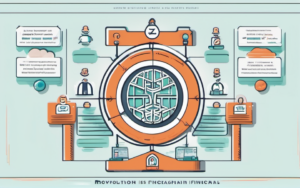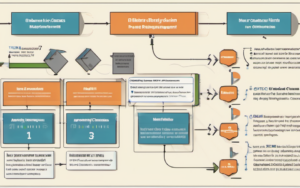The term “blockchain” has become a buzzword, promising to revolutionize everything from finance to healthcare. But is it just hype or a genuine technological breakthrough? While the potential of blockchain is undeniable, critics argue that its real-world applications are still limited, and its adoption faces significant challenges. Let’s delve into the arguments against blockchain and explore its potential for the future.
The Rise and Fall of Blockchain Hype
The idea of a decentralized, tamper-proof ledger resonated with many, leading to a surge in blockchain technology adoption and investment. Cryptocurrencies, particularly Bitcoin, emerged as the poster child for blockchain’s potential, capturing headlines and attracting both enthusiasts and skeptics.
Early Promises and Unfulfilled Expectations
Early proponents of blockchain envisioned a world where transactions were faster, cheaper, and more secure. They promised to eliminate intermediaries, reduce fraud, and empower individuals. While these promises were attractive, many have yet to materialize on a large scale.
The Blockchain Bubble and Its Aftermath
The hype surrounding blockchain reached a fever pitch in 2017-2018, with countless initial coin offerings (ICOs) flooding the market. However, the subsequent crash exposed the speculative nature of much of the blockchain industry, leaving many disillusioned.
The Critics’ Arguments: A Closer Look
While the potential of blockchain is undeniable, critics raise valid concerns about its practical limitations and potential pitfalls.
Scalability and Transaction Speed
One of the most significant criticisms of blockchain is its limited scalability. Many blockchains, including Bitcoin, struggle to handle a large number of transactions simultaneously, resulting in slow transaction speeds and high fees. This bottleneck hinders its adoption for mainstream applications that require high throughput.
Energy Consumption and Environmental Impact
The energy-intensive nature of proof-of-work (PoW) consensus mechanisms used by some blockchains, such as Bitcoin, has raised environmental concerns. The massive energy consumption required for mining can contribute to greenhouse gas emissions, making it unsustainable in the long run.
Security Concerns and Decentralization Myths
While blockchain is often touted as a highly secure technology, critics argue that it’s not immune to vulnerabilities. Attacks on exchanges and smart contracts have highlighted the potential risks associated with blockchain, demonstrating that decentralization doesn’t guarantee absolute security.
Lack of Real-World Applications Beyond Cryptocurrencies
Despite the hype, critics point out that blockchain has yet to deliver on its promise of widespread adoption beyond cryptocurrencies. While some use cases have emerged in specific industries, the technology hasn’t revolutionized the world in the way some predicted.
Beyond the Hype: Potential Use Cases and Future Directions
While critics raise valid points, it’s crucial to acknowledge the potential of blockchain to transform certain industries.
Supply Chain Management and Transparency
Blockchain can enhance supply chain transparency by providing an immutable record of goods’ origin, movement, and ownership. This can help reduce fraud, improve traceability, and enhance efficiency. For example, companies can use blockchain to track the provenance of food products, ensuring their authenticity and safety.
Digital Identity and Data Security
Blockchain can play a role in creating secure and verifiable digital identities. By storing personal information on a distributed ledger, blockchain can help protect against data breaches and identity theft. This has implications for various sectors, including healthcare, finance, and government services.
Decentralized Finance (DeFi) and its Implications
Decentralized finance (DeFi) is an emerging field leveraging blockchain technology to create new financial products and services. DeFi protocols offer alternatives to traditional financial institutions, enabling peer-to-peer lending, borrowing, and trading without intermediaries. However, DeFi faces challenges related to regulation, security, and user experience.
Conclusion: A Balanced Perspective on Blockchain’s Future
Blockchain is a powerful technology with the potential to revolutionize specific industries. However, it’s important to maintain a balanced perspective and acknowledge its limitations. The current hype surrounding blockchain has often outpaced its practical applications, leading to unrealistic expectations and a lack of focus on real-world problems.
The future of blockchain lies in finding practical solutions and developing applications that address specific needs. By focusing on real-world problems, fostering responsible innovation, and embracing a collaborative approach, blockchain can become a transformative force for good.




